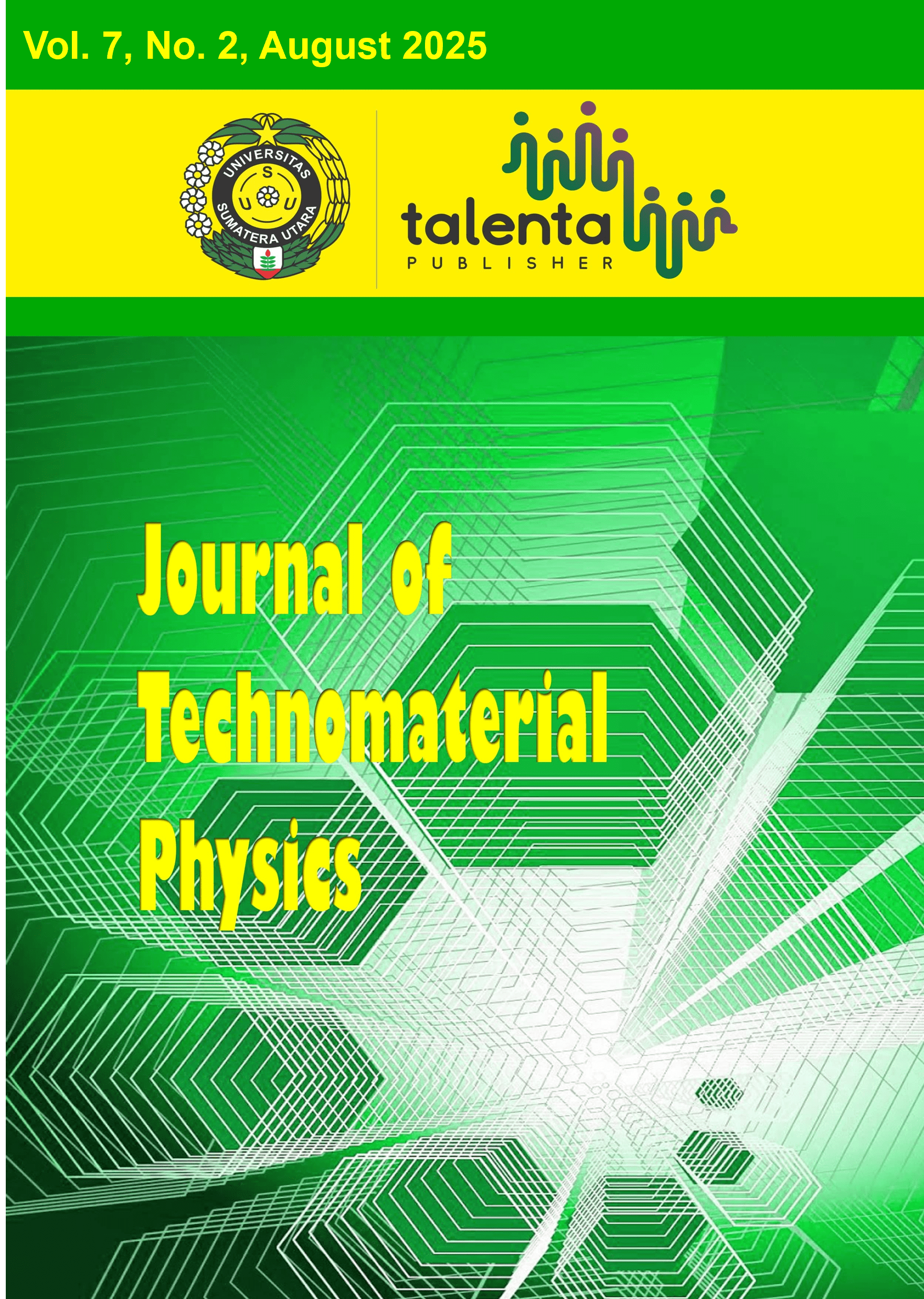Development of a Two-Layer Secure IoT Locker System Using e-KTP RFID and Mobile OTP via Blynk Platform
DOI:
https://doi.org/10.32734/jotp.v7i2.22170Keywords:
Two-Layer Authentication, Blynk, NodeMCU ESP8266, Smart Locker, RFID, Time-based OTPAbstract
The growing demand for safe storage in public places has highlighted the flaws of single-factor authentication methods such as RFID, which are vulnerable to cloning. This study solves these security weaknesses by building and implementing a safe, low-cost IoT locker with a strong two-factor authentication (2FA) mechanism. The suggested method combines Indonesia's national ID card (e-KTP) for initial RFID-based access with a dynamic One-Time Password (OTP) sent to the user's smartphone via the Blynk IoT platform. The NodeMCU ESP8266-based prototype underwent extensive reliability, performance, and security testing. The results showed that both e-KTP and OTP validation were 100% accurate. The performance research revealed an average OTP delivery time of 5.6 seconds and a total access time of 28.2 seconds. Crucially, security analysis confirmed that the required second factor (OTP) effectively prevented unauthorized access even when the e-KTP was cloned. This study confirms a realistic and scalable two-factor authentication system that considerably increases locker security over single-factor techniques.
Downloads
References
K. N. Sai, Dr. T. Sunil, and Dr. M. Eshwarappa, “A comprehensive review of door lock security systems,” Int. J. Circuit Comput. Networking, vol. 5, no. 1, pp. 12–17, Jan. 2024, doi: 10.33545/27075923.2024.v5.i1a.61.
Ch. M. Shruthi, S. K. Bandari, C. K. Reddy Ala, and M. Reddy, “Locker Security System using Internet of Things,” E3S Web Conf., vol. 391, p. 01153, 2023, doi: 10.1051/e3sconf/202339101153.
Kiran Ingale, “Seamless Home Automation: Integrated Smart Security and Comfort Systems,” jisem, vol. 10, no. 51s, pp. 143–149, May 2025, doi: 10.52783/jisem.v10i51s.10375.
W. J. Rose, I. Confente, S. T. Peinkofer, and I. Russo, “Unlocking the door: information disclosure framing and consumer characteristics in parcel locker adoption,” IJPDLM, vol. 55, no. 11, pp. 92–117, Feb. 2025, doi: 10.1108/ijpdlm-01-2024-0005.
G. Vardakis, G. Hatzivasilis, E. Koutsaki, and N. Papadakis, “Review of Smart-Home Security Using the
Internet of Things,” Electronics, vol. 13, no. 16, p. 3343, Aug. 2024, doi: 10.3390/electronics13163343.
K. Nielson and S. Sajal, “The Art of RFID Hacking,” in 2023 Intermountain Engineering, Technology and Computing (IETC), Provo, UT, USA: IEEE, May 2023. doi: 10.1109/ietc57902.2023.10152251.
I. El Gaabouri, M. Senhadji, M. Belkasmi, and B. El Bhiri, “A Systematic Literature Review on Authentication and Threat Challenges on RFID Based NFC Applications,” Future Internet, vol. 15, no. 11, p. 354, Oct. 2023, doi: 10.3390/fi15110354.
P. V. Revenkov, A. A. Berdyugin, and P. V. Makeev, “Research on Brute Force and Black Box Attacks on ATMs”.
T. Van Hamme, G. Garofalo, E. Argones Rúa, D. Preuveneers, and W. Joosen, “A Novel Evaluation Framework for Biometric Security: Assessing Guessing Difficulty as a Metric,” IEEE Trans.Inform.Forensic Secur., vol. 19, pp. 8369–8384, 2024, doi: 10.1109/tifs.2024.3455930.
M. I. Zulfiqar and I. Younis, “Enhanced Security Paradigms: Converging IoT and Biometrics for Advanced Locker Protection,” IEEE Internet Things J., vol. 11, no. 20, pp. 33811–33819, Oct. 2024, doi: 10.1109/jiot.2024.3432282.
L. Tran, T. Nguyen, H. Kim, and D. Choi, “Security and privacy enhanced smartphone-based gait authentication with random representation learning and digital lockers,” Pattern Recognition, vol. 129, p. 108765, Sep. 2022, doi: 10.1016/j.patcog.2022.108765.
P. Shanthi, S. Vidivelli, and P. Padmakumari, “Privacy-preserving cloud-based secure digital locker with differential privacy-based deep learning technique,” Multimed Tools Appl, vol. 83, no. 34, pp. 81299– 81324, Mar. 2024, doi: 10.1007/s11042-024-18566-5.
T.-M. Hoang, V.-H. Bui, and N.-H. Nguyen, “An Integrated Two-Factor Authentication Scheme for Smart Communications and Control Systems,” mendel, vol. 29, no. 2, pp. 181–190, Dec. 2023, doi: 10.13164/mendel.2023.2.181.
C. Caballero-Gil, R. Álvarez, C. Hernández-Goya, and J. Molina-Gil, “Research on smart-locks cybersecurity and vulnerabilities,” Wireless Netw, vol. 30, no. 6, pp. 5905–5917, Aug. 2024, doi: 10.1007/s11276-023-03376-8.
Department of Computer Engineering, K.J Somaiya Institute of Technology, Mumbai (Maharashtra), India., A. Desai, C. Shah, Department of Computer Engineering, K.J Somaiya Institute of Technology, Mumbai (Maharashtra), India., M. Bivalkar, and Department of Computer Engineering, K.J Somaiya Institute of Technology, Mumbai (Maharashtra), India., “Enhancing Home and Commercial Security: A Multi-Modal Authentication Framework for Keyless Door Lock Systems,” IJCNS, vol. 5, no. 1, pp. 1–7, May 2025, doi: 10.54105/ijcns.a1436.05010525.
B. Alothman et al., “Development of an Electronic Smart Safe Box Using Private Blockchain Technology,” Applied Sciences, vol. 12, no. 13, p. 6445, Jun. 2022, doi: 10.3390/app12136445.
Downloads
Published
Issue
Section
License
Copyright (c) 2025 Journal of Technomaterial Physics

This work is licensed under a Creative Commons Attribution-ShareAlike 4.0 International License.








